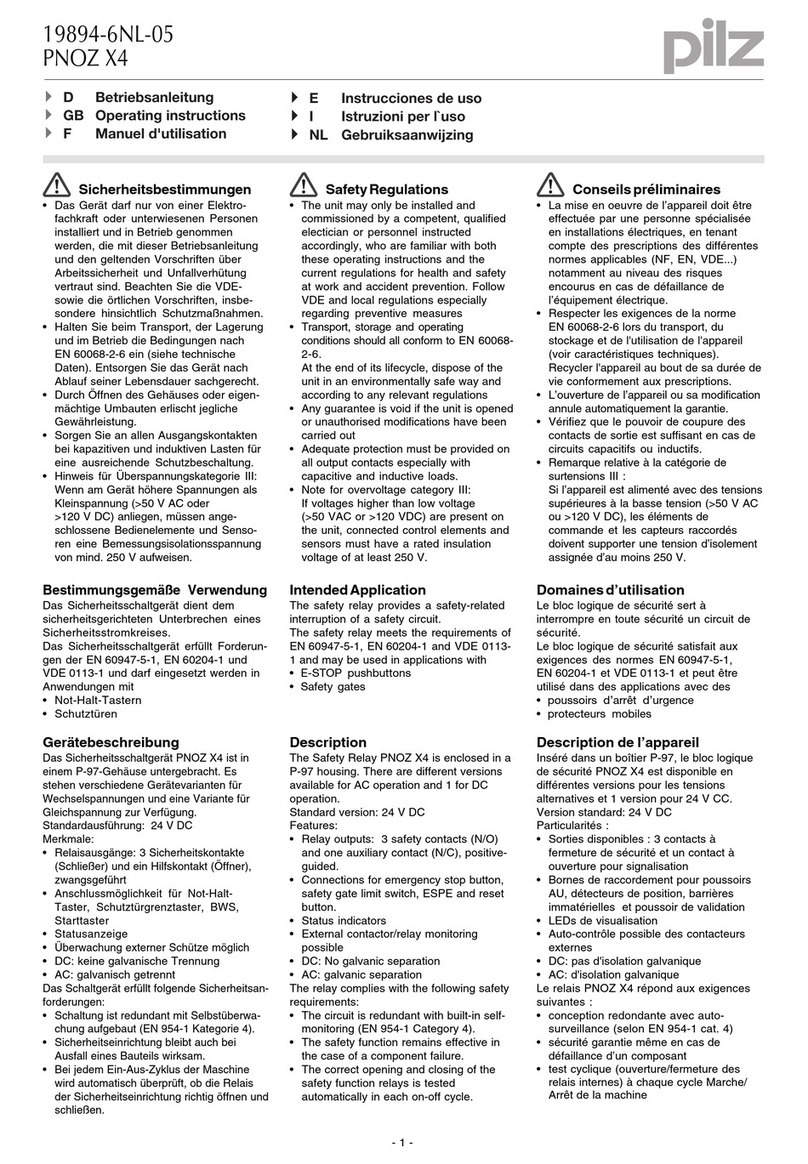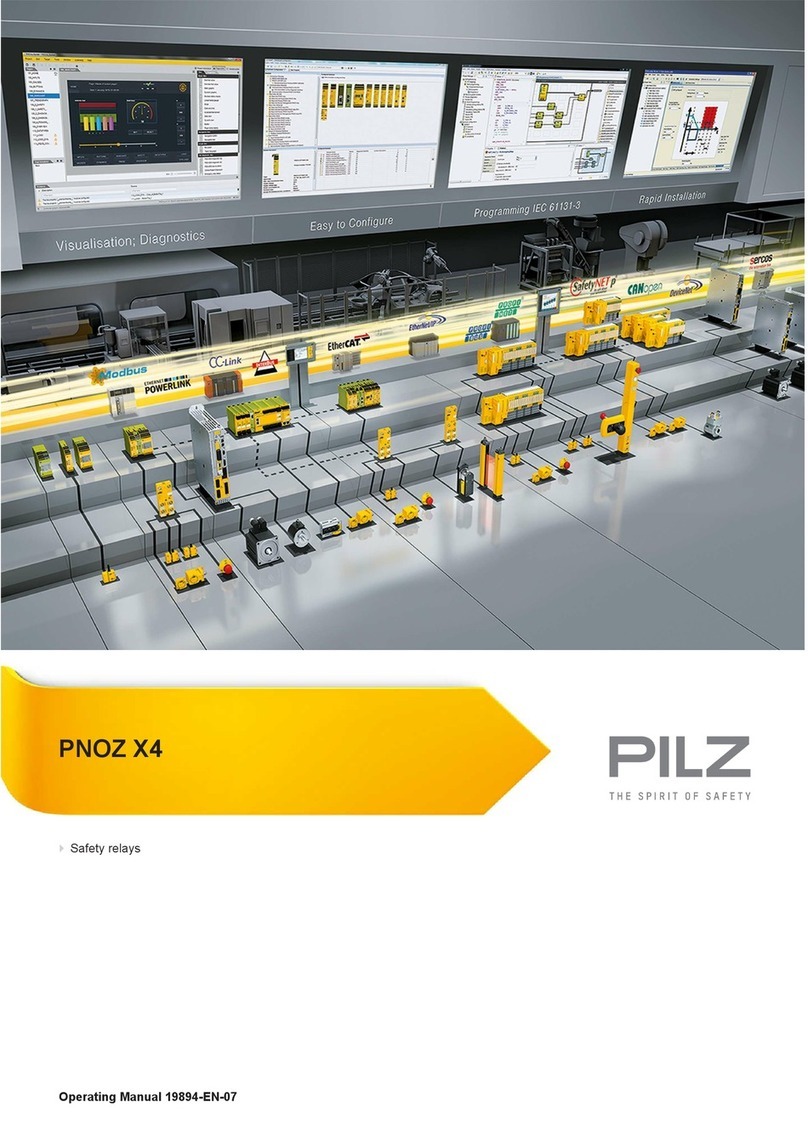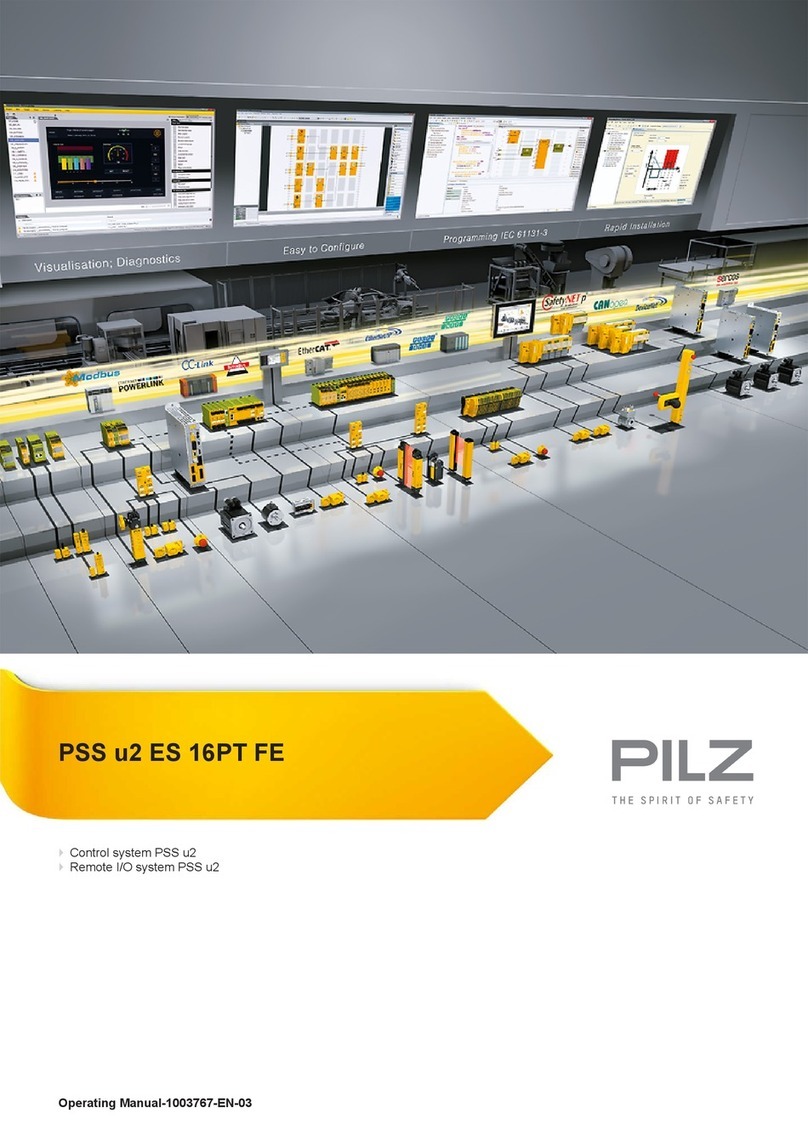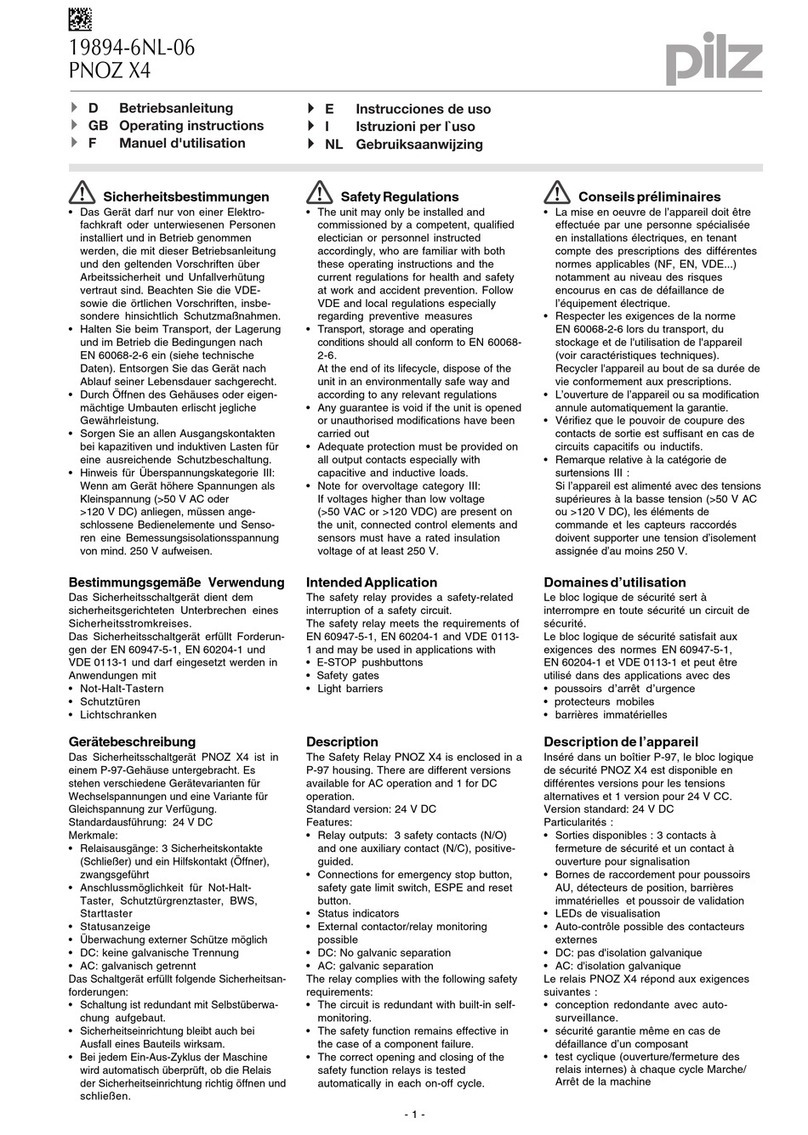Basics
System description
Overview
2007-11Pilz GmbH & Co. KG, Sichere Automation, Felix-Wankel-Straße 2, 73760 Ostfildern, Germany
1.1-2
1.1
Overview1.12007-11BasicsSystem descriptionOverview
Modular design
`The modular safety system consists
of a base unit and several expan-
sion modules.
`The base unit has several inputs
and outputs and is fully functional
even without an expansion module.
`The expansion modules supple-
ment the base unit with additional
inputs or outputs.
Configuration in the PNOZmulti
Configurator
`The function of the safety system is
established through the PNOZmulti
Configurator.
`The PNOZmulti Configurator is a
graphic tool which is used to define
the functions of the units. Using
predefined symbols, a simple cir-
cuit diagram shows how the units'
inputs and outputs should be con-
nected. This circuit diagram is then
downloaded to the base unit.
`From this data, the base unit recog-
nises the safety functions it is to
perform. For example, safety func-
tions such as E-STOP, two-hand
monitoring and safety gate monitor-
ing are available. With the correct
circuitry it is possible to achieve
categories 2, 3 and 4 in accordance
with EN 954-1.
`The fact that the system is modular
and configurable guarantees the
highest level of flexibility. The safety
system can be expanded or the
safety functions modified at any
time.
Inputs
`Units in the PNOZmulti modular
safety system have semiconductor
inputs for safety-related and stand-
ard applications.
`The inputs for standard applica-
tions can also be set via the serial
interface or via fieldbus modules
(e.g. PROFIBUS-DP, CANopen, ...).
`One expansion module in the
PNOZmulti modular safety system
has safe, analogue inputs. The in-
put signals are converted into digit-
al signals.
`For standard applications, the ex-
act analogue values are made avail-
able to the base unit to forward to a
fieldbus.
Outputs
`Units in the PNOZmulti modular
safety system have both semicon-
ductor and relay safety outputs.
`The outputs for standard functions
use semiconductor technology.
`The safety outputs use semicon-
ductor technology, require no main-
tenance and are non-wearing; they
are therefore suitable for applica-
tions with frequent operations or
cyclical functions. They can be
used for 24 VDC applications.
`The relay safety outputs are suita-
ble for less frequent operations, but
they have a higher breaking capac-
ity and can be used for AC applica-
tions.
`The outputs for standard applica-
tions can also be evaluated via the
serial interface or via fieldbus mod-
ules (e.g. PROFIBUS-DP, CAN-
open, ...).
Base unit + expansion modules
Download
PNOZm Config

































